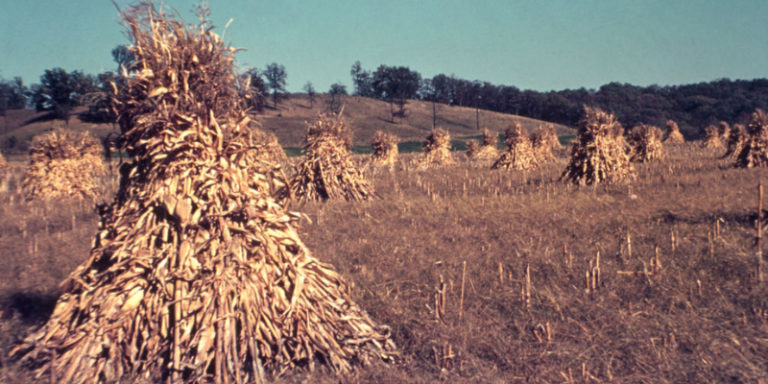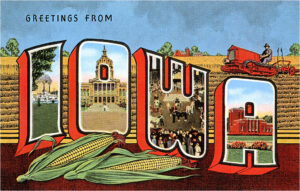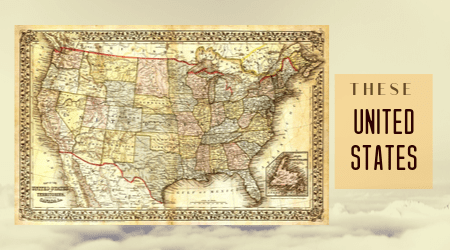Iowa: From Conflict to Corn Belt
Although the state was populated by so many indigenous tribes, it has only one reservation today.
By: Kelli Ballard | January 7, 2020 | 473 Words

(Jim Heimann Collection/Getty Images)
Iowa, also known as the Hawkeye State, became the 29th state admitted to the Union on December 28, 1846. The state’s name comes from the Iowa River, referring to the Ioway people, a tribe of Native Americans that inhabited the lands.

Vintage illustration of Greetings from Iowa large letter vintage postcard, 1930s. (Photo by Found Image Holdings/Corbis via Getty Images)
From about 300 CE until the 17th century, a group known as the Effigy Moundbuilders had settlements in the northeastern area. These indigenous people built earthen mounds in the shapes of various animals, including bears and birds. It is not certain what the mounds specifically represented, but it is thought that they were used either for ceremonies or for tracking cosmic phenomena. Today, approximately 200 of these artifacts remain in the area.
As time went on, roughly 17 Native American tribes occupied the region, including the Ioway, Fox (Mesquakie), Sauk, and Sioux. As Europeans started exploring the area, many of the tribes ended up giving their lands to the U.S. through treaties. Although the state was populated by so many indigenous tribes, there is only one reservation today; the Mesquakie Settlement, located in the central part of the state.
 In 1682, French Explorer Robert de La Salle visited and claimed the area for France as a section of what the Louisiana Territory. This territory was owned by France (and partially Spain) until 1803 when the Louisiana Purchase transferred ownership to the U.S.
In 1682, French Explorer Robert de La Salle visited and claimed the area for France as a section of what the Louisiana Territory. This territory was owned by France (and partially Spain) until 1803 when the Louisiana Purchase transferred ownership to the U.S.
The first permanent settlement was established in the 1830s, after the Black Hawk War – a conflict between the Sauk tribe and the U.S. The Sauk tribe had been told to leave their lands, but in 1832, they returned and went to war with the U.S. under their Chief Black Hawk, trying to get their lands back. The Native Americans surrendered after the Battle of Bad Axe. The tribes had to give up a portion of their land in the Black Hawk Purchase.
Since then, Iowa has developed as a largely rural state that formed part of the “Corn Belt” agricultural area.

SIOUX CITY, IOWA, circa 1885, The Sioux City Seed Company of Sioux City, Iowa promotes a line of corn seed through this printed trade card from the mid-1880s . (Photo by Transcendental Graphics/Getty Images)
Interesting Facts
- In the 1950s, rock stars Buddy Holly, the Big Bopper, and Ritchie Valens were traveling to an event when their plane crashed and they were killed in Clear Lake, Iowa.
- In 1840, the Winnebago Indians had to give up their lands and leave their home territory in Wisconsin. The U.S. government stepped in and gave the tribe protection by building Fort Atkinson. It was the first and only time the U.S. built a shelter to shield one tribe from others.
















